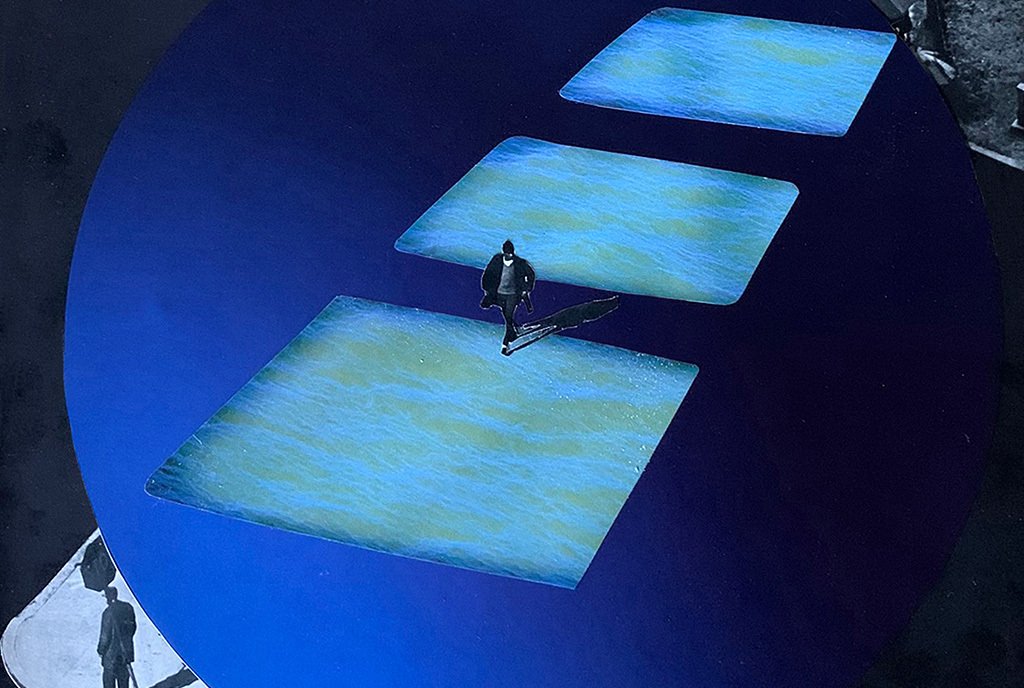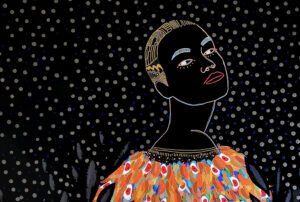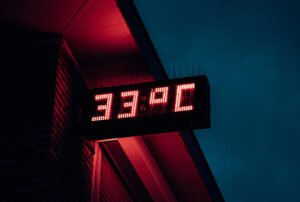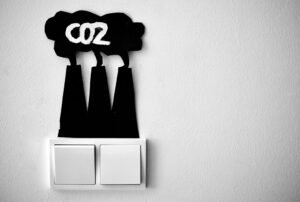
Editors’ note: This piece is from Nonprofit Quarterly Magazine’s fall 2023 issue, “How Do We Create Home in the Future? Reshaping the Way We Live in the Midst of Climate Crisis.”
After the weather turned, so did we.
Veering from thermonuclear wildfires to biblical floods, the violence of the atmosphere made us prone to adolescent extremes. Amid a gale, our brawling neighbors slammed into a eucalyptus that toppled and crushed them both. During a triple-digit, triple-week heat wave, teenagers tore apart my brother’s classroom.
Like love, like bankruptcy, like sleep, the wild swings happened slowly then all at once. The wealthiest among us staved it off longer in their climate-controlled compounds, jetting into low-orbit during the worst of the weather.
But even trillionaires couldn’t outrun the seasonal affective disorder, which lengthened and merged until the symptoms plagued most of us year-round, compounded by our grief and anger, which deepened every time another ecosystem, another species blinked out: the tiger salamander, the condor, the kangaroo rat, the marsh sandwort.
For many—for me—the end of fog led to the end of my patience. Though we’d heard that the cool gray city might become as sun-bleached as Seville by the end of the century, “someday” had arrived sooner than anyone had predicted.
Sign up for our free newsletters
Subscribe to NPQ's newsletters to have our top stories delivered directly to your inbox.
By signing up, you agree to our privacy policy and terms of use, and to receive messages from NPQ and our partners.
After the gloom failed to materialize month after month, a blue-ribbon committee—convened around the troubling blue skies—proposed gene therapy. Like those tomatoes spliced with fish genes, we too might adapt to the wild swings in climate, but funding evaporated like the fog we hadn’t known defined us.
We survived largely on the belief that its absence was an anomaly. Soon, we’d return to those contrarian summers—the ones as cold as winter—and to the blankness upon which generations of us had projected our dreams. The clouds dropping down to swaddle but also to erase, a reminder of how impermanence gives rise to possibility. No matter where we’d hailed from, we wished for silver—not the gold of this endless summer but the silver of a fog bank pouring like cream, with a scent that clarified and a briskness that slapped us out of tradition and routine.
It’s been two years now, and worldwide, fog is nearly extinct. The realization that my unborn child will consider it as they might a rotary phone, a monarch butterfly, or a Tesla leaves me unmoored. As I wade into Ocean Beach—now merely bracing instead of heart-stopping—I ache for my firstborn, who will never dream about fog on the Avenues, never call upon it as a metaphor, never curse the dampness that makes a home cozier upon return, and never turn porous in the mist with someone they love.
Their generation will come of age in a city where we’ve lost our taste for the temperate, our dispositions like palates scorched on too much sugar, salt, and fat. The mild bland and so too the middle: the middle ground of consensus, of the collective. If only we hadn’t been so self-serving, we might have forestalled disaster.
I halt before getting in too deep, struck by the thought that the extreme is how we might find a way through. Not with seawalls or another stopgap but an idea too outlandish for anywhere else—that might take root and flourish under every color of sky.










